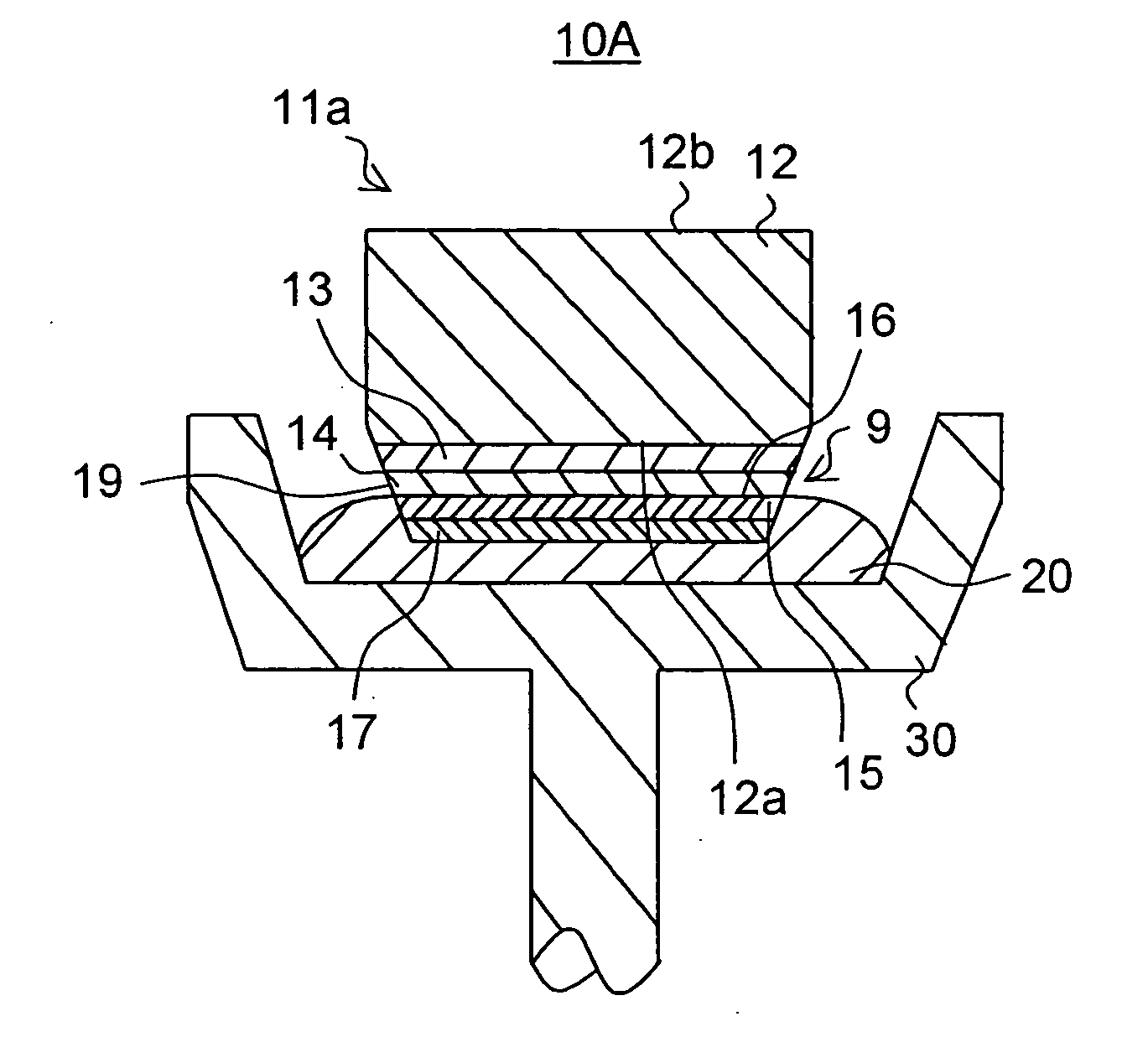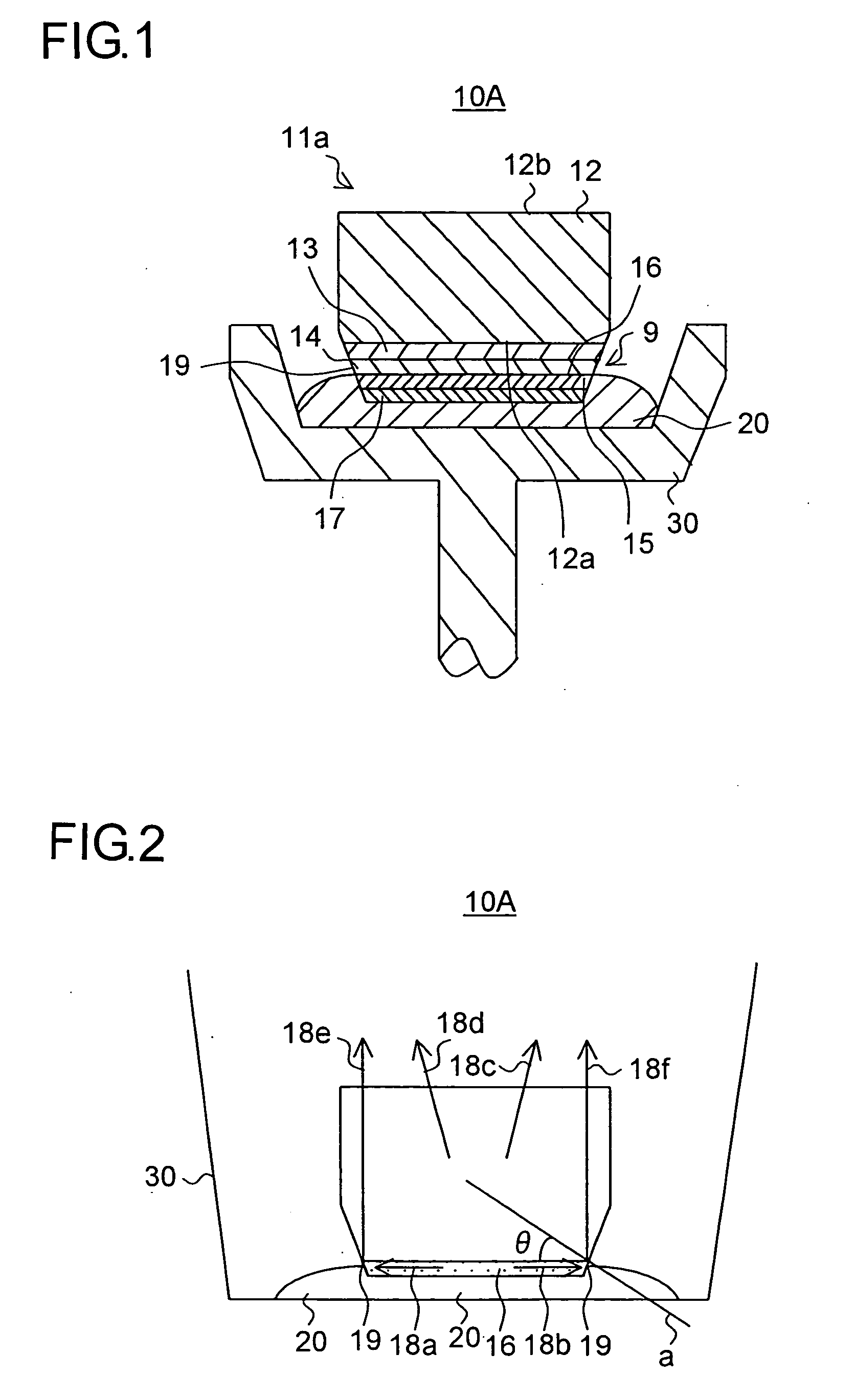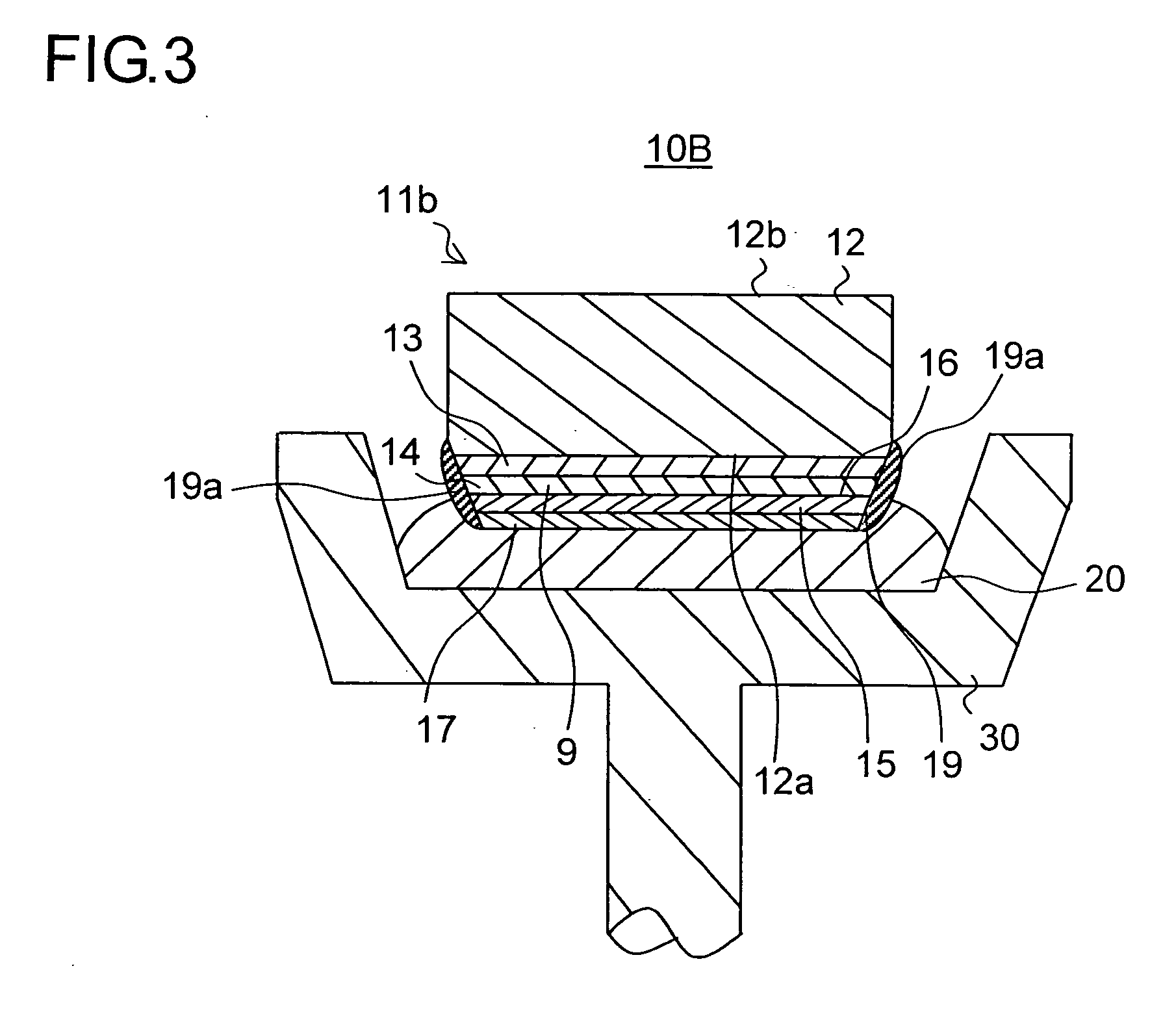Light-emitting diode
a light-emitting diode and light-emitting layer technology, applied in the direction of semiconductor devices, electrical apparatus, transistors, etc., can solve the problems of wasting 80% of light generated, affecting the efficiency of light extraction, and requiring several years to put it into practical use, so as to improve the light extraction efficiency, enhance the light emission output of the light-emitting element, and alleviate the shielding of light
- Summary
- Abstract
- Description
- Claims
- Application Information
AI Technical Summary
Benefits of technology
Problems solved by technology
Method used
Image
Examples
Embodiment Construction
[0057] Hereinafter, embodiments of the present invention will be described with reference to the drawings. For the sake of convenience, such parts as find their counterparts in FIGS. 6 and 7 described earlier are identified with common reference symbols. It should be understood that the present invention may be implemented in any manner other than specifically shown in the drawings. FIG. 1 is a sectional view showing the light-emitting diode of a first embodiment of the invention.
[0058] The light-emitting diode 10A has an LED chip 11a provided on top of a cup-shaped leadframe 30. The LED chip 11a has a translucent substrate 12 formed of insulating sapphire, and on a first surface 12a of the sapphire substrate 12 is formed, via a butter layer 13, a semiconductor layer 9. The semiconductor layer 9 is composed of a first-conductivity-type semiconductor layer 14 formed of one of p- and n-type semiconductors and a second-conductivity-type semiconductor layer 15 formed of the other of th...
PUM
 Login to View More
Login to View More Abstract
Description
Claims
Application Information
 Login to View More
Login to View More - R&D
- Intellectual Property
- Life Sciences
- Materials
- Tech Scout
- Unparalleled Data Quality
- Higher Quality Content
- 60% Fewer Hallucinations
Browse by: Latest US Patents, China's latest patents, Technical Efficacy Thesaurus, Application Domain, Technology Topic, Popular Technical Reports.
© 2025 PatSnap. All rights reserved.Legal|Privacy policy|Modern Slavery Act Transparency Statement|Sitemap|About US| Contact US: help@patsnap.com



